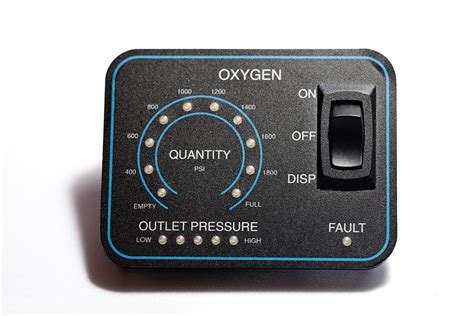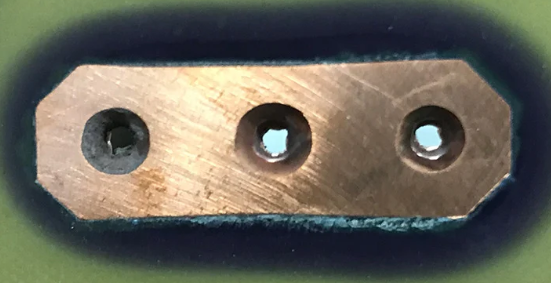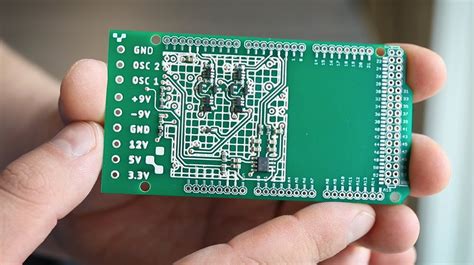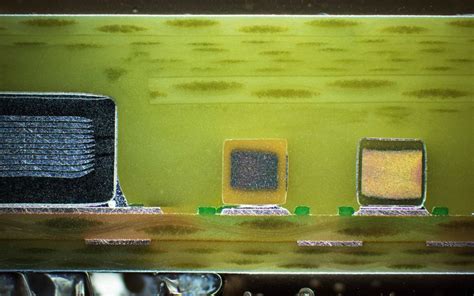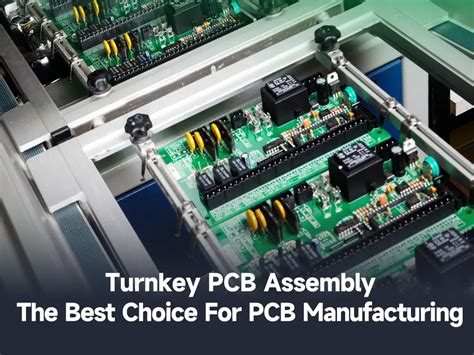Maximizing Efficiency: The Art of Custom Electronic Assembly
Key Takeaways
In the realm of custom electronic assembly, the significance of optimizing processes cannot be overstated. Understanding the fundamentals of pcb assembly and the intricacies involved in pcba allows professionals to reap substantial benefits, including reduced production time and heightened quality. Implementing innovative techniques can streamline workflows, significantly enhancing productivity while eliminating waste. Attention to quality control is crucial; adopting best practices ensures that each component not only meets specifications but also adheres to industry standards. Furthermore, leveraging modern technology plays a pivotal role in optimizing efficiencies—automated systems, for instance, can minimize human error and speed up production cycles. Moreover, fostering collaboration among team members enhances communication, which is vital to troubleshoot challenges effectively and maintain a steady pace in electronic assembly projects. By studying successful case studies, organizations can glean insights that propel them forward in their custom assembly endeavors. Ultimately, keeping an eye on future trends sets the stage for continuous improvement in processes, encouraging adaptability while cementing a competitive edge in the ever-evolving landscape of custom electronic manufacturing.
Understanding Custom Electronic Assembly: Key Concepts and Benefits
Custom electronic assembly, often referred to as PCB assembly or PCBA, involves the intricate process of building electronic circuits tailored to specific requirements. This method is crucial in today’s technology-driven world, where personalized solutions have become the norm. By utilizing printed circuit boards (PCBs) designed for unique applications, manufacturers can enhance both functionality and efficiency.
The benefits of custom electronic assembly are manifold. First and foremost, it enables companies to optimize their products for performance while ensuring that they meet individual customer needs. For instance, specialized assemblies can lead to reductions in size and weight without compromising power or efficiency. This is particularly advantageous in sectors like consumer electronics, automotive, and healthcare.
Moreover, the ability to innovate through customization means that manufacturers can respond more swiftly to market trends and technological advancements. This responsiveness not only boosts competitiveness but also fosters closer relationships with clients who are looking for specific solutions tailored precisely to their operational challenges.
| Benefit | Description |
|---|---|
| Enhanced Performance | Custom assemblies designed for specific tasks can operate more efficiently compared to standard solutions. |
| Faster Time-to-Market | Tailored processes allow companies to quickly adapt offerings based on client demands or emerging technologies. |
| Improved Quality Control | Manufacturers can implement specific testing protocols tailored to the custom PCB designs, ensuring greater reliability. |
“Custom electronic assembly not only meets technical needs but also serves as a catalyst for innovation in product development.”
By embracing the principles of custom electronic assembly, organizations can achieve higher productivity levels while maintaining the highest quality standards in their processes. This strategic approach is essential in an industry where both technological capability and customer satisfaction are vital for success.
Innovative Techniques for Streamlined Production
In the realm of custom electronic assembly, leveraging innovative techniques is crucial for achieving efficiency and excellence. One significant method involves the implementation of advanced pcb assembly processes, which enhance the precision and speed of production. Adopting automation in pcba can significantly reduce the time spent on repetitive tasks, allowing human resources to focus on more complex issues that require critical thinking and problem-solving skills. Additionally, employing modular assembly techniques enables teams to work concurrently on different components, thus streamlining workflow and minimizing bottlenecks. Furthermore, integrating lean manufacturing principles can help identify and eliminate waste in production steps, leading to increased productivity and reduced costs. Using real-time data analytics to monitor operations provides instant feedback, enabling quicker adjustments to processes based on performance metrics. Such innovative approaches not only improve the quality of electronic assemblies but also contribute to building a robust foundation for future projects, ensuring that production teams can adapt to evolving demands while maintaining high standards in their pcba endeavors.
Best Practices for Quality Control in Electronic Assembly
Ensuring high-quality standards in custom electronic assembly, particularly in PCB assembly (also known as PCBA), is paramount for the reliability and functionality of electronic products. Implementing robust quality control measures can significantly enhance both the production process and final output. One of the essential practices is to conduct thorough inspections at each stage of the assembly process, starting from raw material evaluation to final product testing. This includes visual inspections for solder joints, verifying component placement, and using automated optical inspection (AOI) systems to identify defects early on. Additionally, employing Statistical Process Control (SPC) can help monitor process variations and maintain consistency in quality. By integrating these methods, manufacturers not only reduce waste but also improve efficiency by ensuring that problems are detected before they escalate into larger issues. Regular training sessions for assembly personnel on quality standards and best practices further reinforce a culture of excellence within teams. Ultimately, a strategic focus on quality control not only assures compliance with industry standards but cultivates customer trust and satisfaction in PCBA products, establishing a solid foundation for ongoing success in the electronic assembly landscape.
The Role of Technology in Enhancing Efficiency
In today’s fast-paced manufacturing landscape, technology plays a pivotal role in elevating the efficiency of custom electronic assembly processes. The integration of advanced tools and systems, such as automated machinery, sophisticated software solutions, and real-time monitoring, has transformed traditional practices into highly optimized workflows. For instance, the use of robotic arms in pcb assembly not only increases precision but also significantly reduces production time. Moreover, adopting smart technologies facilitates the seamless exchange of information between different stages of production, enhancing visibility and control over processes such as pcba and component placement. By employing digital simulation tools, manufacturers can anticipate potential bottlenecks and address them proactively, ensuring a smoother operational flow. Furthermore, leveraging data analytics allows for continuous improvements by identifying patterns that can inform better decision-making. As manufacturers embrace these technological advancements, they are better positioned to meet demand while maintaining high standards of quality and efficiency in their electronic assembly projects.
Collaboration and Communication: Boosting Team Productivity
In the realm of custom electronic assembly (CEA), effective collaboration and communication are indispensable for enhancing team productivity. When working on projects such as pcb assembly or pcba, it’s crucial that all team members—engineers, designers, and assemblers—maintain an open line of communication to ensure that technical specifications are clearly understood and objectives are aligned. Regular meetings and updates can help in addressing potential issues as they arise, rather than allowing them to escalate into bigger problems that could hamper production timelines.
Implementing collaborative tools, such as project management software, can also streamline workflows by allowing teams to share updates and resources in real-time. This real-time access ensures that everyone is on the same page regarding project changes or adjustments needed for optimal quality control within the assembly process. Moreover, fostering a culture of open dialogue encourages team members to share their insights and expertise, which can lead to innovative solutions for complex challenges often encountered in pcba projects.
By prioritizing effective communication strategies and collaborative practices, teams working in custom electronic assembly can not only boost their overall productivity but also enhance the quality of their output. This synergy not only contributes to meeting production goals but also solidifies a cohesive work environment where creativity thrives.
Troubleshooting Common Challenges in Electronic Assembly
In the realm of custom electronic assembly, challenges can arise that may hinder production efficiency and quality. Identifying these hurdles at an early stage, particularly in PCB assembly or PCBA, is crucial for maintaining the integrity of the entire process. One common issue is the misalignment of components during assembly, often leading to functional failures. To mitigate this, implementing precise alignment tools and automated inspection systems can significantly reduce error rates. Another challenge is related to the choice of materials; incorrect solder paste selection can affect adhesion and reliability. Hence, it is vital to adhere to best practices in material selection and ensure compatibility with specific components being used. Additionally, training team members on the latest technologies and techniques can foster quicker problem identification. Regular maintenance of assembly equipment also plays a key role in avoiding mechanical failures that can stunt productivity. By addressing these challenges head-on with tailored solutions, companies can not only improve their workflow but also enhance overall product quality in their custom electronic assembly projects.
Case Studies: Success Stories in Custom Electronic Assembly
Examining real-world applications of custom electronic assembly reveals a myriad of success stories that underline the effectiveness of innovative methodologies in pcb assembly processes. For instance, one leading manufacturer implemented a pcba optimization strategy that utilized advanced software tools for designing printed circuit boards with minimal errors. This approach significantly reduced production time and enhanced overall quality by ensuring that assemblies met stringent industry standards from the outset. Another example includes a startup focusing on niche markets in consumer electronics, which adopted collaborative techniques among cross-functional teams to streamline their assembly line. By fostering open communication and using real-time data analytics, they were able to quickly identify bottlenecks and adjust workflows proactively. These case studies not only highlight the tangible benefits of advanced techniques in custom electronic assembly but also emphasize the role of teamwork and technology in driving efficiency. By learning from such examples, other businesses can explore similar strategies to elevate their own pcb assembly operations.
Future Trends: The Evolution of Custom Electronic Assembly Processes
The landscape of custom electronic assembly is continuously evolving, driven by technological advancements and shifting market demands. One significant trend is the increasing integration of automation in pcb assembly processes. This innovation not only enhances production speed but also improves precision, resulting in higher quality and reliability in pcba output. Additionally, the rise of smart manufacturing technologies—including the Internet of Things (IoT) and artificial intelligence—facilitates real-time monitoring and predictive maintenance, helping to minimize downtime and optimize workflow efficiency. Collaborative approaches are also gaining traction, as cross-functional teams leveraging diverse expertise can lead to comprehensive solutions for complex electronic assembly challenges. Furthermore, as environmental considerations become pivotal in industrial practices, there is a growing emphasis on sustainable methods and materials in the custom electronic assembly sector, pushing companies to adapt their processes accordingly. This combination of automation, collaboration, and sustainability not only drives productivity but also positions businesses at the forefront of innovation within the industry. As these trends continue to take shape, they promise to redefine the capabilities and potential outcomes associated with pcb assembly projects.
Conclusion
In conclusion, enhancing the process of custom electronic assembly is vital for manufacturers seeking to improve both efficiency and quality. As we explored, the integration of innovative techniques like automation and effective layout design can significantly streamline the pcb assembly workflow. Challenges in production can often be overcome by fostering strong collaboration and communication among teams. Moreover, implementing best practices for quality control ensures that the final products meet industry standards and customer expectations. The role of technology, particularly in areas like artificial intelligence and machine learning, provides transformative opportunities in optimizing pcba processes. As organizations continue to adapt to changing market needs, staying informed about future trends in custom electronic assembly will be essential for sustaining competitive advantages. Overall, by embracing these strategies and remaining adaptable, businesses can maximize productivity while delivering high-quality electronic assemblies that cater to diverse customer requirements.
FAQs
What is custom electronic assembly?
Custom electronic assembly refers to the process of manufacturing printed circuit boards (PCBs) and their components tailored to specific client requirements. It encompasses everything from designing the circuitry to assembling and testing the final product.
What are the benefits of using custom electronic assembly?
Utilizing custom electronic assembly, or PCBA, allows companies to achieve higher efficiency, reduce costs, and ensure high-quality production tailored to unique specifications. This approach often leads to optimized performance and reliability in the end product.
How does technology enhance efficiency in PCB assembly?
Technology plays a crucial role by automating various stages of the pcb assembly process. Advanced software systems can streamline designs, while robotics can increase speed and precision during assembly, resulting in reduced error rates and faster project completion.
What are some common challenges faced in electronic assembly projects?
Common challenges include managing supplier quality, ensuring design compatibility, and balancing cost with performance. Effective planning and collaboration among teams can mitigate these issues significantly.
How can collaboration improve productivity within teams handling electronic assembly projects?
Collaboration enhances information flow among team members, resulting in quicker decision-making and problem-solving. By fostering an environment of open communication, teams are more likely to identify potential issues early on, ultimately improving project outcomes.

